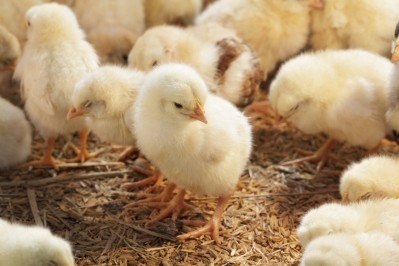Probiotic research shifting from performance enhancement towards health and welfare: EPA
At EuroTier in Hannover last month, we caught up with Dr Eric Auclair, R&D Director at Lesaffre Feed Additives and Treasurer of the European Probiotic Association (EPA), and Laurent Dussert, global category manager at Lallemand and EPA president.
Auclair told FeedNavigator that there is a migration away from studying the efficacy of feed probiotics in terms of their global performance, such as their contribution to FCR and animal growth.
“The focus now is very much on getting a clear understanding of the role probiotics play in the interaction between nutrition and overall animal health, especially in the areas of immunity, mucosa integrity, and gastrointestinal tract functionality,” he said.
Scientists are trying to get a deeper understanding of the mode of action of probiotics in terms of this kind of functionality, said Auclair.
And he said challenged situations are proving the most efficacious as regards demonstrating the usefulness of the supplementation of probiotics in pig and poultry diets.
Classification revision needed?
In the EU, registered probiotics are classified as zootechnical feed additives: well identified and safe strains officially recognized for their gut flora stabilizer or digestibility enhancer functionality.
However, at a EuroTier event to announce the winner of the EPA’s Jules Tournut Probiotics Prize for 2014, Dussert asked whether the current EU classification of probiotics should be revised in the light of new functions beyond performance that multiple trials are supporting.
He said scientists, industry and the regulatory authorities need to come together to agree on a functional definition which encompasses the diversity of probiotic benefits on animal health and welfare.
Diversity of research
Dr Gérard Bertin, secretary general of EPA, and Professor Joaquim Brufau, a member of the association’s scientific committee, said the award showed the scope and diversity of probiotic research going on around the world, with applications from ten different countries covering the use of probiotics in the swine, beef and dairy cattle, poultry and aquaculture sectors.
Dr Steve Frese’s winning project, conducted at the University of Nebraska in the US, looked at the specificity of Lactobacillus reuteri, with the EPA saying his findings could aid easier selection of tailored probiotic strains that are able to colonize and persist in the host gut to provide antimicrobial and anti-inflammatory benefits, and, in turn, reduce the need for antibiotics.
Brufau addressed the challenge of sustainability in animal production with probiotics, he said, offering promise in terms of enhanced animal welfare through improved resistance to disease with the associated profitability benefits, as well as an improved environmental profile for farmed animal producers through supporting a reduction in methane emissions.
EU probiotic usage
Over the last 10 years, feed probiotic usage has developed significantly in the EU, in particular since the ban on antibiotic growth promoters in January 2006, reports the EPA.
EU authorization of microorganisms with probiotic effect as a feed additive came into effect in 1996. Since then, more than 20 microorganisms have been approved for different livestock production usages including in feed for broilers, turkeys, layers, piglets, fattening pigs, sows, calves, beef cattle, dairy cows, small ruminants, rabbits, and aquaculture.
Market penetration, said the association, varies greatly according to segment and country, for technical and historical reasons. According to unpublished EPA data, current penetration levels for probiotic usage in swine, poultry and ruminant feed in the EU is:
- Swine: 10 to 40%, with higher penetration - up to 50% - at the piglet stage
- Poultry: 10 to 30%
- Ruminant: 30 to 70% with highest usage in intensive dairy systems and beef feedlots.














